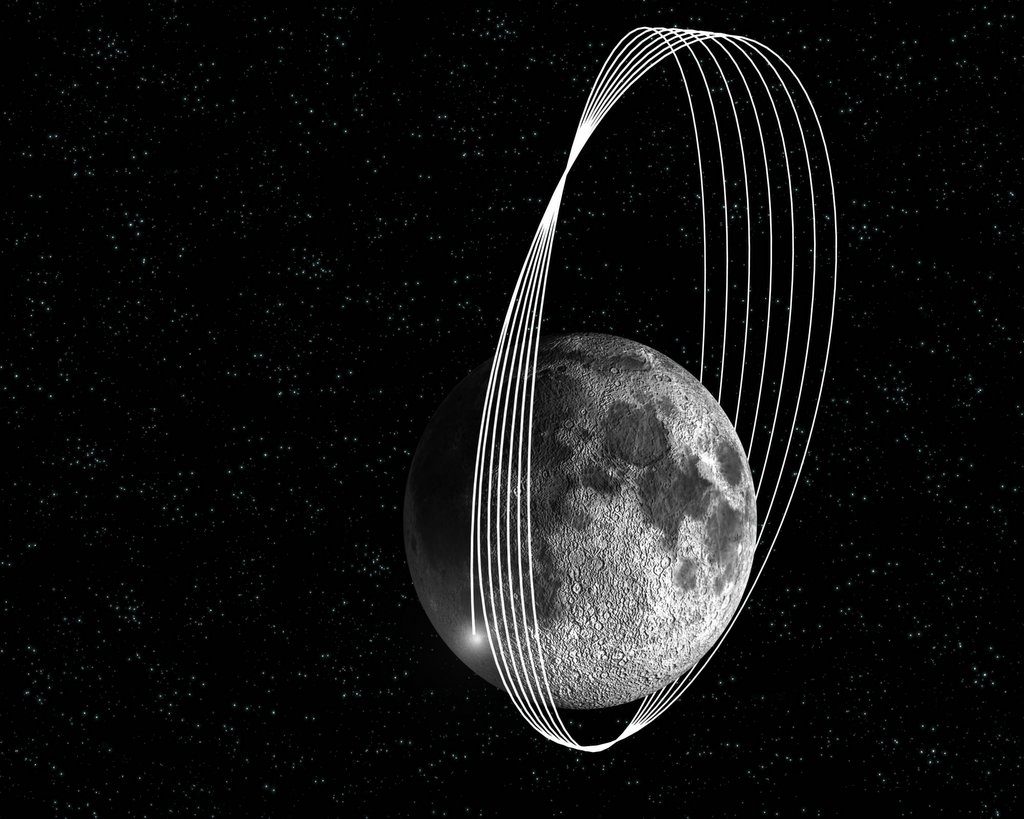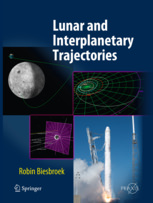I’ve always been amazed when watching the game of billiards. Some person, with great concentration and aim, uses a long wooden stick to strike one ball which then, by design, causes reactions to other balls. The balls travel along precisely predetermined paths! Now imagine doing this in 3-D. Sound impossible? Well, that’s what mission designers must do when preparing to send a probe to another orbiting body in our solar system. And their methodology is wonderfully presented in Robin Biesbroek’s book “Lunar and Interplanetary Trajectories”.
This book could be described as ‘precise.’ The author describes it as being written for a systems approach. He then goes on to proclaim that he presents and uses only one equation. This may be a good thing as the book has more than enough numerical data without adding the analytics. And the information flows along smoothly, as if presenting a case study so the reader won’t get overwhelmed.
First Biesbroek presents the significant parameters; the C3 launch energy and the co-ordinate system. Remember that I mentioned things were in three dimensions? Well, this book has us also realize that the co-ordinate system can come in many guises. As well, there’s lots of angular momentum with which to deal. To aid the reader, the author includes many, many charts, graphs and plots. The plots of trajectories from Earth to beyond are particularly revealing and indeed necessary at times to grasp the nuances of positive and negative notations and maximum energy usage. To entice the reader further, Biesbroek includes many resolved missions, such as New Horizons, Phobos Grunt and Cassini/Huygens. Last, with almost a teasing presence, the author adds to the end of each chapter a few scholarly exercises. But don’t worry, the solutions immediately follow!
Sounds intriguing doesn’t it? Well there’s more. Biesbroek utilizes his systems approach when looking at pros and cons for many situations. For example, he’s got the Low Earth Orbit mass delivery for the Falcon rocket as a condition. And he wants us to constrain the timing of our approach to Mars to minimize the chances of intersecting with a seasonal dust storm. Then there’s the challenge of visiting Jupiter without getting harmed by its magnetic field.
Further, and perhaps most insightful, is the expectation for any mission to be ten years or less. Apparently we may lose interest with anything that takes longer! But what if the designer gets it wrong? You’ll just have to read the book to see why just this happened with the Surveyor lander. Apparently the controllers got a bit of a surprise as the lander didn’t quite settle as expected. Nevertheless, with lots of errors of margin, the lander did survive and contribute to our knowledge base of space. As a reader will see, it’s quite an accomplishment to design and build something for launch from Earth many years beforehand.
Yes, this book presents what appears to be a carefully chosen mix of useful data and background information. Being that the author uses a systems design approach in the book, then there are limits to what the reader can use. Even with an appendix full of data tables, the reader may feel constrained by the finite options provided. That is, there are look-up tables throughout and it’s up to the reader to figure out the best way to use them. You may want to go into more depth, but I suspect it’d take a good deal more training before you could comfortably prepare your own Molniya orbits. Thus, know that there is a mix of information in this book and after reading it you won’t come out an expert in anything. But you will come out with a lot more knowledge on mission design and constraint parameters.
When sitting back in a chair and looking at fantastic colour images of the surface of Pluto it’s no surprise that it seems so easy and straightforward. Yet, as with almost anything that looks easy, there’s a huge amount of effort riding along in the background, supporting every moment. And it all starts with turning an idea into reality.
That’s where Robin Biesbroek’s book “Lunar and Interplanetary Trajectories” steps in. It will show you some of the tricks of the trade in optimizing missions, whether choosing the best launch system or balancing an orbit about a Lagrange point. Most people who appreciate the photos of distant worlds may appreciate the effort involved. Yet, for them, and for others who may think it`s quite simple, this book will have you appreciating all that’s involved with travelling in space.


